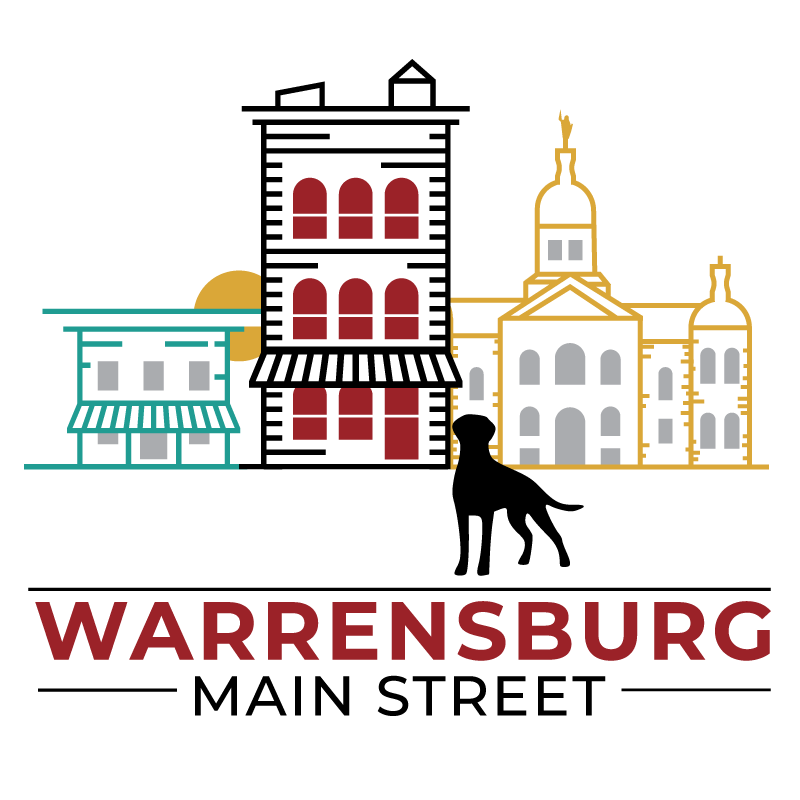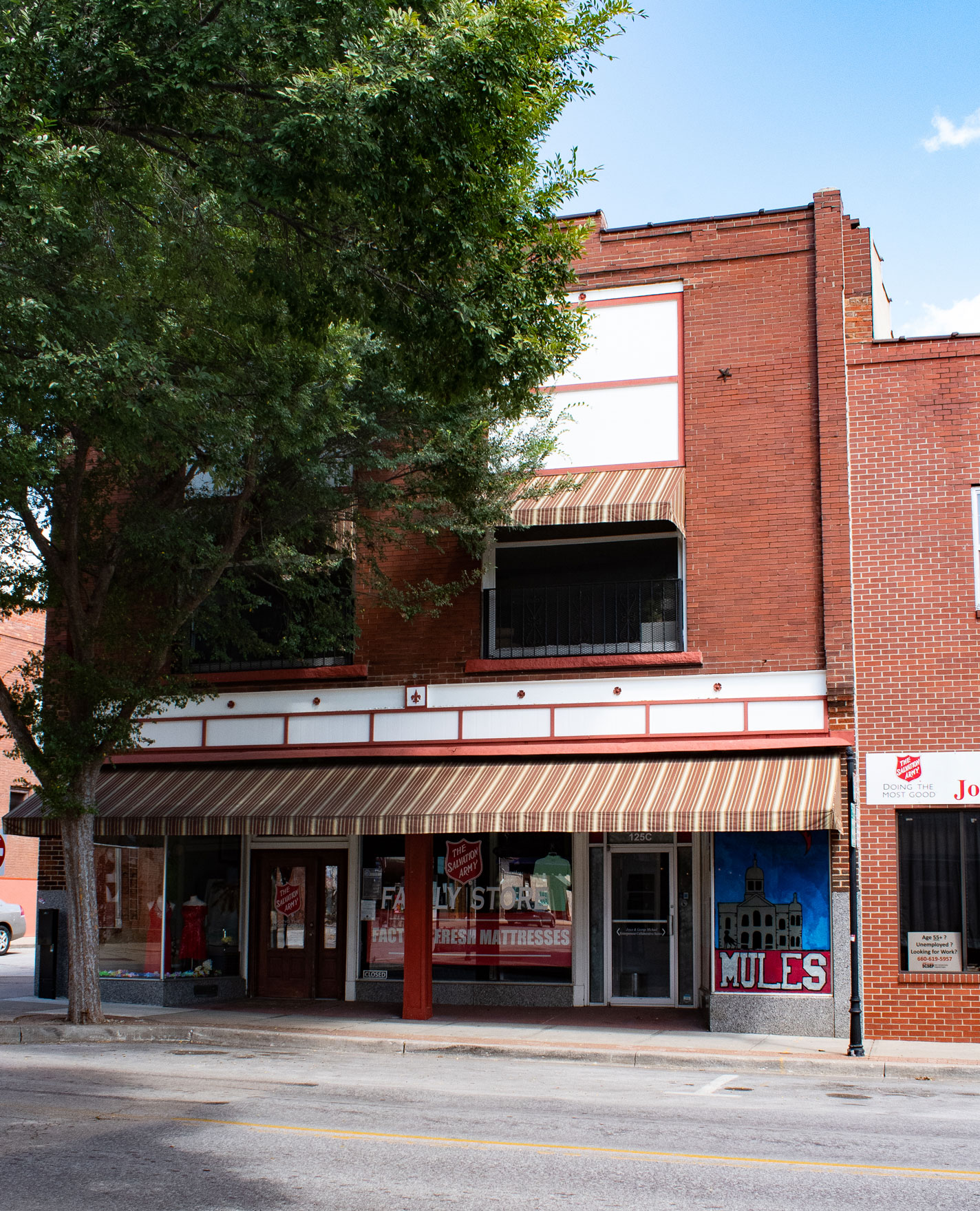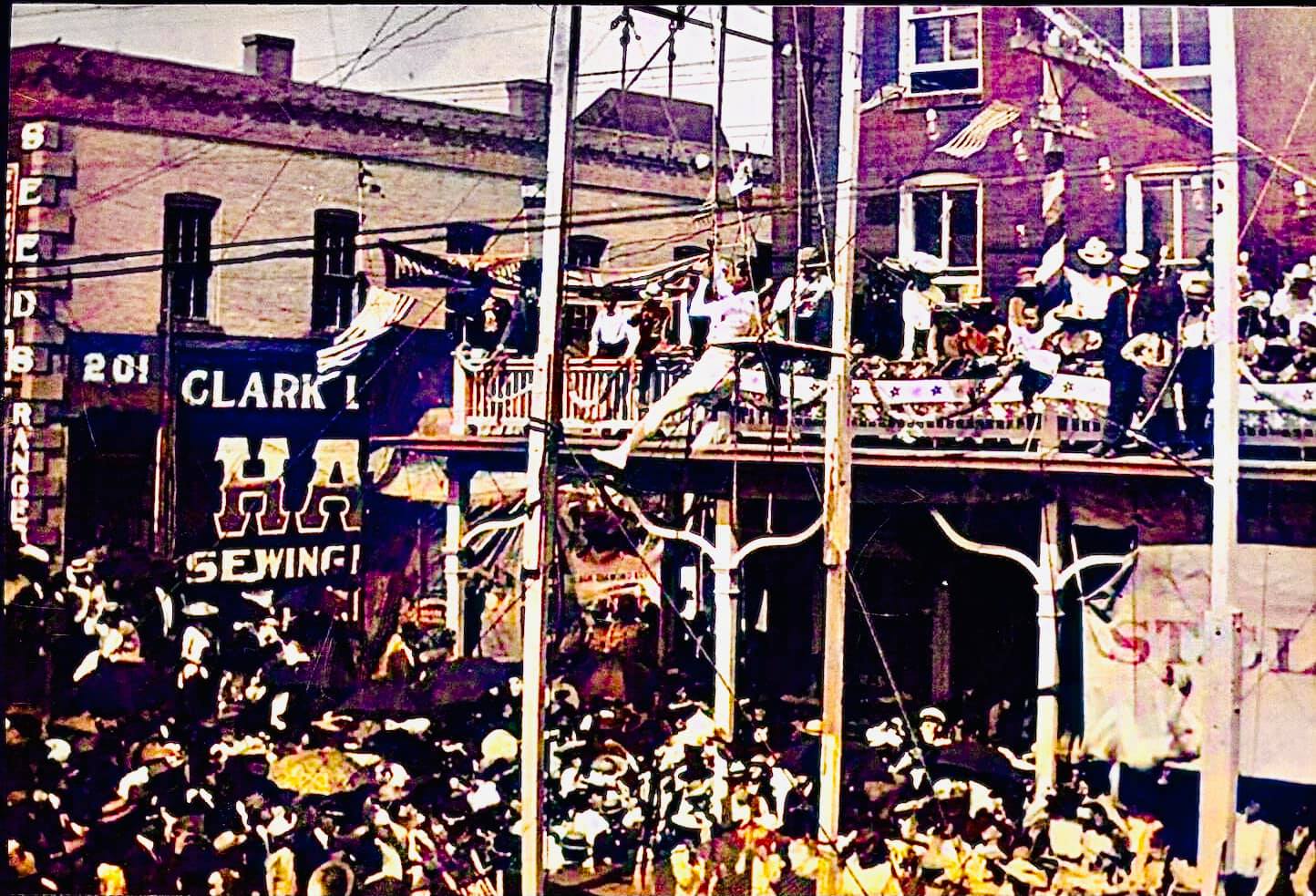In 1870, a building at the southeast corner of Holden and Culton streets was erected for the Cumberland Presbyterian church. In 1875, it was bought by A. W. Ridings & Company was enlarged for the St. Cloud hotel until 1898. In the early 1900’s D. D. Williams Harness and Saddle Store was located on the first floor and Collins Millinery on the second floor. A little later it was bought by Mrs. J. D. Eads, and became for many years the Eads Hotel and was replaced by Cohn’s Wonder store in 1913. It later became Woolworth’s Clothing store from 1928-1972. Other businesses located in this building is the Trails Regional Library, Salvation Army Family Store and Warrensburg Main Street.
HISTORY
FUN FACTS
D. D. Harness and Saddle and Collins Millinery both suffered incredible losses from a fire in 1909. The Millinery lost $1200 in goods with only $300 in insurance
The Cohn Wonder Store had a very attractive Fourth of July window display. This popular display would cause several young children to stop and look at it.
Before Woolworth’s grand opening in 1928, they offered an inspection day the day before, where the community was able to tour the new store and see the building, yet not buy anything.
ARCHITECTURE
This two-story building was altered in 1940. It has brick cladding, terra cotta tile coping caps, and recessed brick panels. Display windows flank the main entrance, with a fabric awning shading the first story. There are also fabric awnings on the lower half of the windows on the wrought iron balconettes. This building retains integrity and clearly communicates its historic commercial function.




